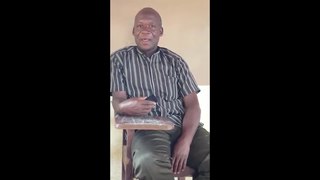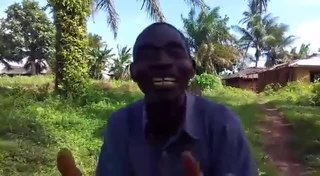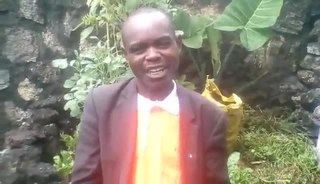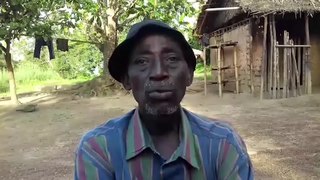Related Research Articles
Bandi may refer to:
Liberian Kreyol is an English-based pidgin spoken in Liberia. Also known as Kolokwa, was spoken by 1,500,000 people as a second language which is about 70% of the population in that time. Today the knowledge of some form of English is even more widespread. It is historically and linguistically related to Merico, a creole spoken in Liberia, but is grammatically distinct from it. There are regional dialects such as the Kru Pidgin English used by the Kru fishermen.

Mende is a major language of Sierra Leone, with some speakers in neighboring Liberia. It is spoken by the Mende people and by other ethnic groups as a regional lingua franca in southern Sierra Leone.
Kissi is a Mel language of West Africa, There are two dialects, northern and southern, and both are tonal languages. The northern dialect is spoken in Guinea and in Sierra Leone. In its northern form, it often uses loanwords from the Malinke and the Mende language. The southern dialect is spoken in Liberia and Sierra Leone. The two dialects are notably different, but are closely related.
Wetarese is an Austronesian language of Wetar, an island in the south Maluku, Indonesia, and of the nearby islands Liran and Atauro, the latter in East Timor north of Dili.
Maninka, or more precisely Eastern Maninka, is the name of several closely related languages and dialects of the southeastern Manding subgroup of the Mande language family. It is the mother tongue of the Malinké people in Guinea, where it is spoken by 3,300,000 people and is the main language in the Upper Guinea region, and in Mali, where the closely related Bambara is a national language, as well as in Liberia, Senegal, Sierra Leone and Ivory Coast, where it has no official status. It was the language of court and government during the Mali Empire.

Dan is a Mande language spoken primarily in Ivory Coast and Liberia. There is also a population of about 800 speakers in Guinea. Dan is a tonal language, with around 9-11 contour and register tones depending on the dialect.

Klao, or Kru, is a Kru language of the Niger–Congo language family, spoken primarily in Liberia, with some speakers also in Sierra Leone. It uses SVO word order for main clauses and SOV for embedded clauses. A Klao translation of the Bible by missionary Nancy Lightfoot was released in 2000. The language has Western, West Central, Central, and Eastern dialects.
The Sapo language, also known as Sarpo or Southern Krahn, is a Kru language of the Niger–Congo language family. It is spoken in eastern Liberia, primarily in Grand Gedeh County and Sinoe County, by the Sapo people. Its dialects include: Juarzon, Kabade (Karbardae), Nomopo (Nimpo), Putu, Sinkon (Senkon), and Waya (Wedjah).
The Gbi and Dorue language, also known as Gbee or Gbi and Dorue, is similar to the Krahn dialect/ language of the Niger–Congo language family. It is spoken in northern Liberia which is a district within Nimba County. Its dialects include Gbi and Dorue. It has a lexical similarity of 0.78 with the Bassa language, and so might be considered a Bassa dialect.
Liberia is a multilingual country where more than 20 tribal languages are spoken. English is the official language. Kpelle-speaking people are in the majority. The native languages can be grouped in four language families: Mande, Kru, Mel, and the divergent language Gola.

Loma is a Mande language spoken by the Loma people of Liberia and Guinea.
Krumen is a dialect continuum spoken by the Krumen people of Liberia and Ivory Coast. It is a branch of the Grebo languages, a subfamily of the Kru languages and ultimately of the Niger–Congo languages. It had 48,300 speakers in 1993. The main varieties are:
Zialo is a language spoken by the Zialo people in Guinea.
Western Krahn is the principal language spoken by the Krahn people of Liberia and Ivory Coast. It is part of a series a dialects of the Wee (Guere) dialect continuum spoken by the Krahn and Guere peoples.
Gbandi is an ethnic group of Liberia. It is also the language traditionally spoken by these people.
Gola is a language of Liberia and Sierra Leone. It was traditionally classified as an Atlantic language, but this is no longer accepted in more recent studies.

Lega is a Bantu language, or dialect cluster, of the Democratic Republic of the Congo. There are two major varieties, Shabunda Lega and Mwenga Lega; Mwenga Lega, with about 10% of speakers, finds Shabunda difficult to understand. Kanu has been assigned a separate ISO code but is a dialect of Shabunda, and no more divergent than other dialects.

Konobo, or Eastern Krahn, is a Kru language of Liberia.
The Southwestern Mande languages are a branch of the Mande languages spoken in Sierra Leone, Guinea, and Liberia. There are around 2.8 million speakers, chiefly in Sierra Leone, due to Mende, the language with the most overall speakers. The Southwestern Mande languages are distantly related to the historic Manding languages.
References
- ↑ Gbandi at Ethnologue (18th ed., 2015)
- 1 2 3 Lewis, M. Paul (ed.) (2009). "Bandi". Ethnologue: Languages of the World, 16th edition . Dallas, Texas: SIL International . Retrieved 3 October 2010.CS1 maint: extra text: authors list (link)